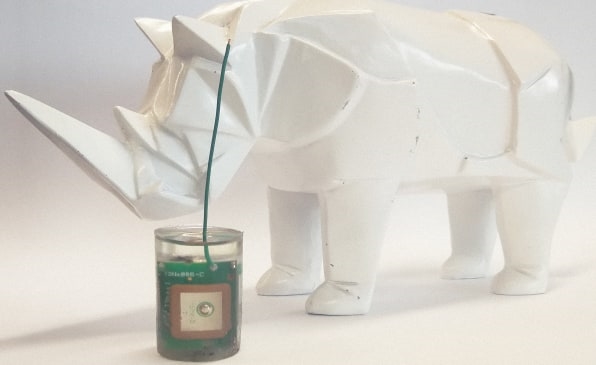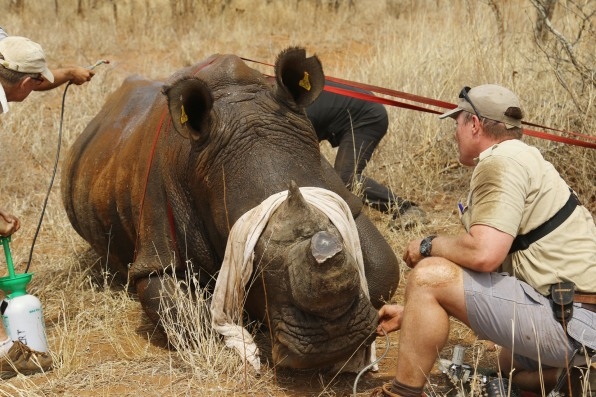In this rhino internet of things, rhinos wear GPS trackers in their horns
In a sprawling wildlife preserve in Zimbabwe larger than Grand Canyon National Park, some of the rhinos roaming the park have sensors embedded in their horns. Three times a day, the trackers send the animals’ GPS locations to solar-powered base stations, which then send the data to rangers through a mobile app.
“Each day, they look at what we call the Google map of rhinos,” says Marion Moreau, head of the Sigfox Foundation, the nonprofit arm of Sigfox, a France-based tech company that builds low-power networks for the internet of things, which designed the sensors as part of a project called Now Rhinos Speak.

Poaching is a major problem for rhinos. In 2018, in South Africa alone, 769 rhinos were killed, or an average of two a day. At the beginning of the 20th century, the global population of the animal was around 500,000; now there are around 28,000. Three species are critically endangered. The last male northern white rhino, a subspecies of the white rhino, died in 2018. Two females are left in Kenya and protected with 24-hour guards.

The preserve in Zimbabwe, and another in Zambia, have been testing prototypes of the Sigfox trackers over the past three years. In Zimbabwe, 49 white and black rhinos have been outfitted with the devices. The system can alert rangers when the animals stray into areas near the borders of the park, where they might be more vulnerable to poaching. It also helps rangers and veterinarians easily find the rhinos on regular patrols.
Older methods of tracking have challenges–traditional radio collars require someone to physically use an antenna and listen for beeps, and the collars themselves (or ankle bracelets) can be problematic for rhinos to wear. Drones can be used to follow wildlife but are expensive, require trained staff to fly, and are limited in how long they can stay in the air. Camera and video technology is also expensive. “These technologies are really not so affordable, and we need a new technology that can be implemented very easily,” says Moreau.
The new trackers are not exactly easy to implant–the rhino needs to be shot with a tranquilizer dart from a helicopter, and then there’s a short window of time for a veterinarian to drill a hole in the horn and insert the inch-long device. But once that process is complete, the trackers can automatically send signals without any extra work, and the technology uses so little power that the small battery inside can continue to work for three years. The technology is more difficult to hack than some alternatives, so poachers can’t access the location data. The device also costs only about $50, a small enough price that parks that haven’t been able to track animals in the past may be able to now.
After three years of testing the prototype, Sigfox is moving into large-scale production this summer. In Kenya, it’s expanding its work at a newly opened conservation technology lab at Ol Pejeta Conservancy, where the last northern white rhinos live. And the developers now plan to adapt the technology for other species, which could wear the sensors as part of collars or bracelets. “We want to help other NGOs protecting elephants or tigers or lions,” says Moreau. “I think it would be very promising for these [groups] because they’re waiting for unintrusive, very low-cost devices.”
(41)

